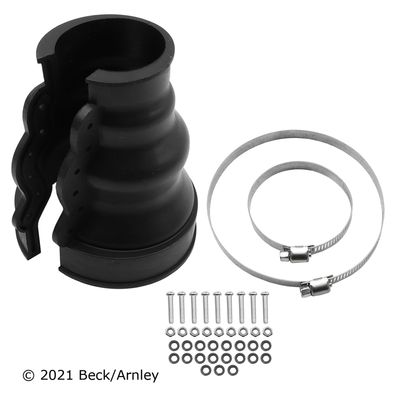Answer
Aug 21, 2024 - 07:48 AM
A CV (Constant Velocity) boot and a CV joint are two different but closely related components in a vehicle’s drivetrain, and they play distinct roles in ensuring the proper functioning of the axle and wheel assembly. Here’s how they differ, especially in the context of GM Genuine Parts kits:
1. CV Boot:- Function: The CV boot is a protective rubber or thermoplastic cover that encases the CV joint. Its primary function is to protect the CV joint from dirt, moisture, and debris, while also retaining the grease that lubricates the joint.
- Location: The CV boot is located at each end of the axle shaft, covering the CV joint that connects the axle to the wheel hub and the transmission.
- Role: It ensures that the CV joint remains properly lubricated and free from contaminants, which is crucial for maintaining the joint’s longevity and performance. A damaged or leaking CV boot can lead to grease loss and contamination, resulting in premature wear of the CV joint.
- Material: Typically made from durable rubber or thermoplastic materials that can withstand the flexing and twisting motion of the axle while driving.
- Function: The CV joint is a mechanical joint that allows the axle to transmit power to the wheels while accommodating the up-and-down motion of the suspension and the turning of the wheels. It allows the wheels to turn at a constant speed regardless of the angle, which is essential for smooth driving and handling.
- Types: There are two main types of CV joints:
- Rzeppa Joint: Found at the outer end of the axle, closer to the wheel. It’s responsible for allowing the wheel to steer and move up and down.
- Tripod Joint: Usually found at the inner end of the axle, closer to the transmission. It allows for the slight in-and-out movement of the axle as the suspension moves.
- Role: The CV joint enables the transfer of torque from the transmission to the wheels at various angles, which is essential for front-wheel-drive and all-wheel-drive vehicles.
- Components: The CV joint itself consists of a cage, bearings, and an outer race, all of which work together to allow smooth movement while transferring power.
- CV Boot Kit (e.g., GM Genuine Parts 19256071): Typically includes the CV boot, clamps, and grease. This kit is used to replace a damaged or worn-out boot, ensuring that the CV joint remains protected and lubricated.
- CV Joint Kit: This would include the CV joint itself, and possibly the CV boot, grease, and other related components needed for installation. This kit is used when the CV joint has worn out or been damaged and needs to be replaced entirely.
- CV Boot Replacement: Often necessary if the boot is torn, cracked, or leaking grease. Replacing the boot can prevent further damage to the CV joint and avoid the need for a more expensive repair.
- CV Joint Replacement: Required if the joint has been damaged or worn out, often due to prolonged exposure to dirt and moisture from a damaged CV boot, or simply due to high mileage and wear.
- CV Boot: A protective cover that seals the CV joint, keeping it lubricated and free from contaminants.
- CV Joint: The mechanical component that allows the axle to transfer power to the wheels while accommodating movement and steering.
Understanding the difference between these two components is crucial for proper vehicle maintenance and ensuring the longevity of the drivetrain system.





Add New Comment